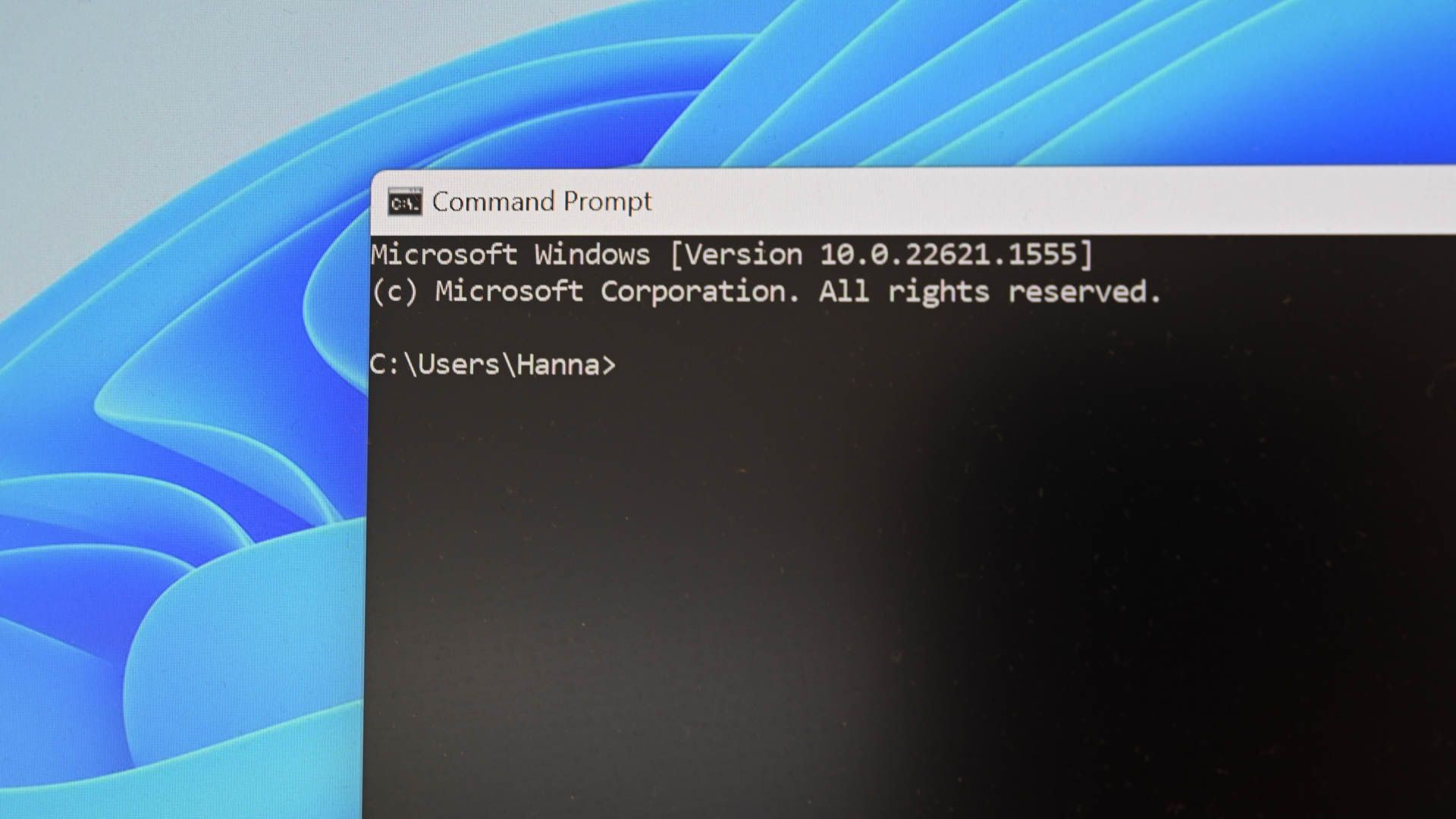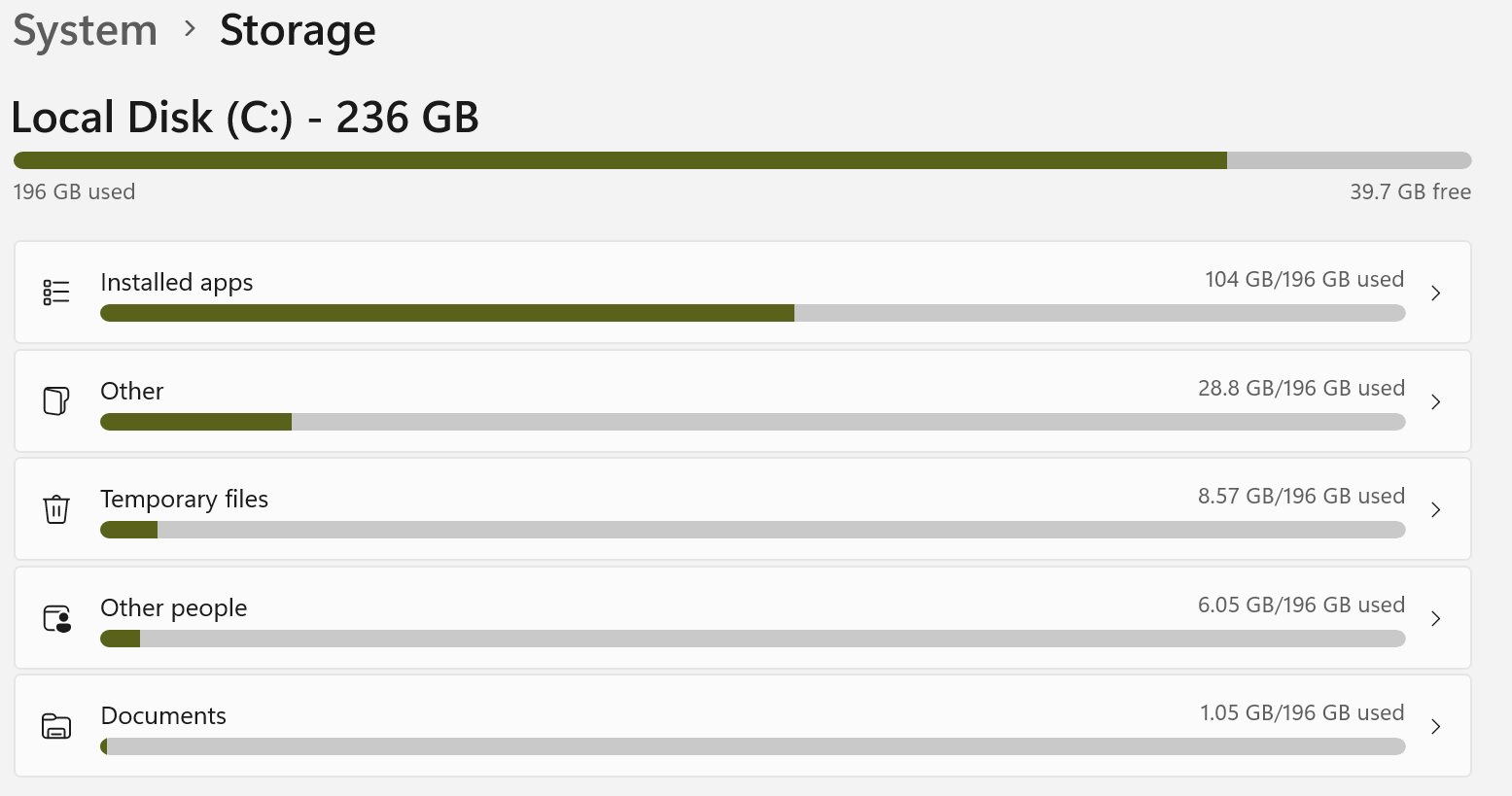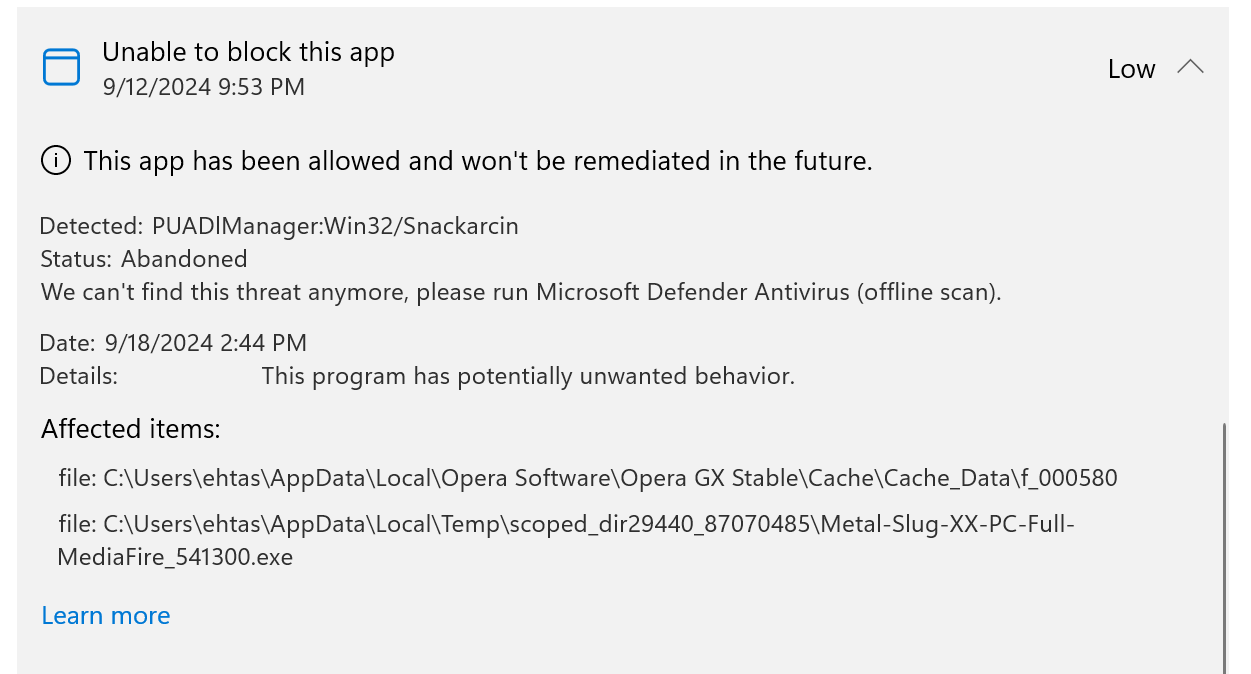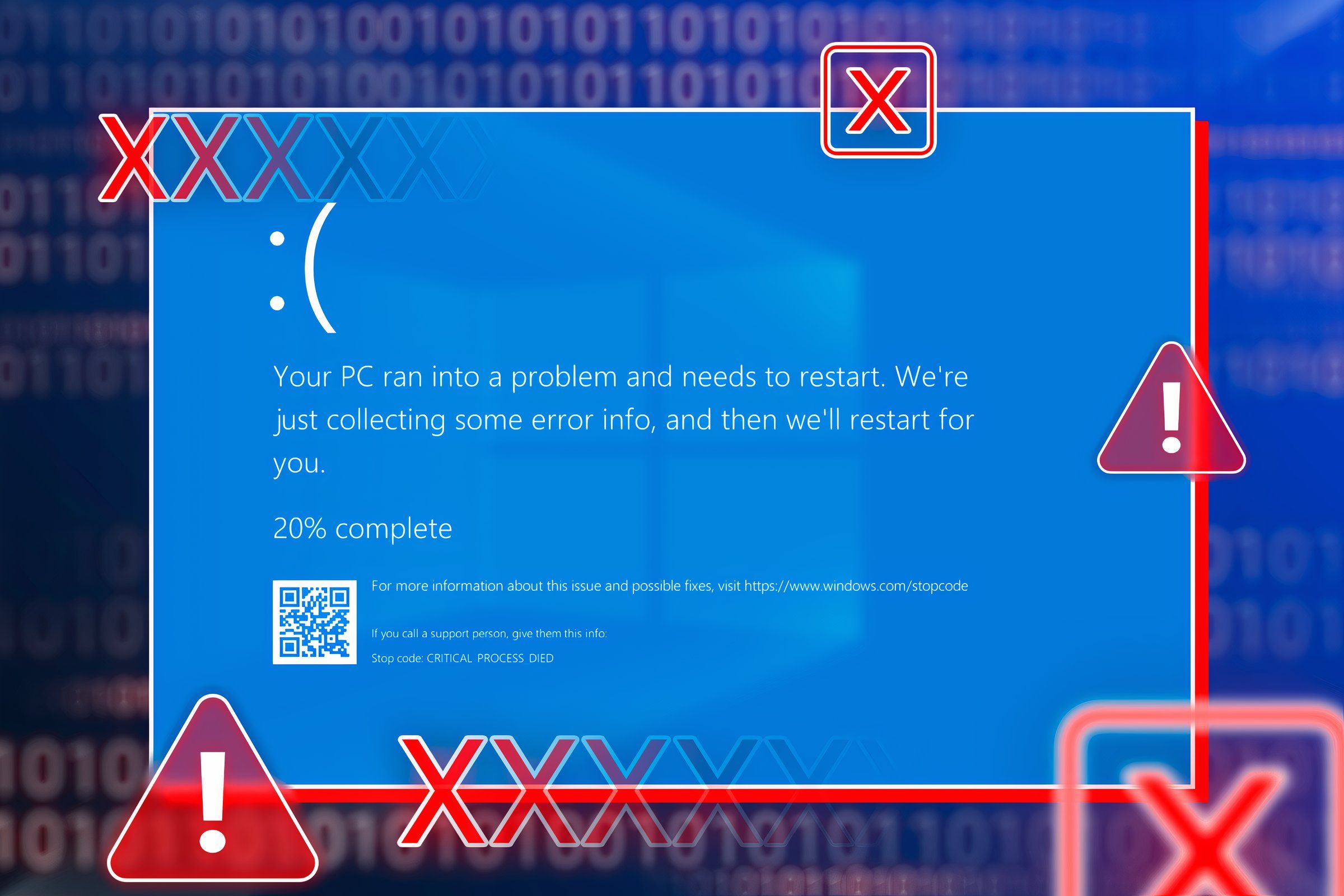Most people find Windows notifications annoying and often dismiss them without even reading. However, brushing them all off can backfire. Some alerts warn about critical problems with your system, and delaying action could put your device at risk. Here are a few warnings you should never ignore.
6
Low Disk Space Notification
The “Low Disk Space” warning appears when your system drive—usually the C: drive—runs low on storage. Windows needs free space to handle tasks like saving temporary files, installing updates, and managing virtual memory. Without enough space, your system can slow down, freeze, or even crash. Important security updates might also fail to install.
Since this can seriously impact performance and stability, you should take this warning seriously and free up space. To do that, head to Settings > System > Storage to check what’s using the most space. You can delete temporary files, uninstall unused apps, empty the Recycle Bin, or move large files to an external drive or cloud storage.
5
Windows Defender: Threat Detected
Windows Defender shows the “Threat Detected” warning when it finds malware or potentially harmful software, such as viruses, trojans, spyware, or ransomware, that could compromise your device. While Defender usually quarantines the file to protect your system, you might still need to take manual steps to completely remove the threat and keep your device secure.
When you see this alert, go to Settings > Privacy & Security > Windows Security, and click “Open Windows Security.” Then, navigate to the “Protection History” tab to view recent threats. Click on the latest event to expand the details and follow the suggested actions if further steps are needed. Also, find out where the threat originated to avoid the source in the future.
4
Frequent Blue Screen of Death
The Blue Screen of Death (BSOD) appears when Windows encounters a serious error from which it can’t recover. While it’s not unusual to see it once in a while, sometimes even due to a bad Windows update, if it starts happening frequently, don’t ignore it. Recurring BSODs can point to serious hardware or software problems.
To determine what’s causing the crash, pay attention to the stop code displayed on the BSOD screen—for example, “MEMORY_MANAGEMENT” points to a memory-related issue. You can use that information to run specific checks and troubleshoot the problem. So, no matter what error appears, look it up online to understand the cause and find a fix without delay.
3
Warning Sign on a Battery
A yellow triangle on your battery icon is a warning you shouldn’t ignore. It can show up for several reasons—maybe you’re using an incompatible or low-powered charger, the battery isn’t holding the charge properly, or the battery itself is failing. Sometimes, it could also be due to a driver issue. When you see this sign, generate a battery health report to check its condition.
Open Command Prompt, run the command powercfg /batteryreport, and review the battery report. Then, update your battery drivers to rule out any software problems. If you’re using a third-party charger, switch to the original one. If the battery is old and you suspect its health has degraded too much, you might need to consider replacing it.
2
There’s a Problem With This Drive
Windows displays the message “There’s a Problem With This Drive” when it detects an issue with a storage device you connect to your computer. This error often appears when a storage drive was removed improperly the last time it was connected. However, it can also be caused by system corruption, malware on the drive, or a hardware issue.
When the error appears, Windows offers to scan the drive and repair damaged file structures. If the issue is minor, like incomplete write operations, the scan usually fixes it. But if the warning keeps popping up even after scanning, you may need to back up your data and reformat the drive. If the problem persists, it could be a hardware issue, and you may need to replace the drive.

Related
How to Use CHKDSK to Fix Hard Drive Problems on Windows 10 or Windows 11
If you have a problem with your hard drive, the first thing to try is running CHKDSK.
1
Unusual Sign-In Activity Detected
When Microsoft notices a suspicious sign-in, like one from a new location, an unknown device, an odd time, or after several failed login attempts, it sends an “Unusual Sign-In Activity Detected” alert via a pop-up, text, or email. Since your Microsoft account is tied to Windows and Microsoft services like OneDrive, Outlook, and more, you have to take this warning seriously.
If you recognize the sign-in as your own—for example, from a new device or while traveling—you can safely ignore it. But if you think someone else might be trying to access your account, act quickly. Head to your Microsoft account settings, remove unfamiliar devices, change your password, and turn on two-factor authentication if it’s not already enabled.
Instead of treating every notification as a distraction, take a moment to spot the important ones—like those mentioned above—check what they mean, and take the proper steps to resolve the issue. Ignoring them could lead to more serious problems that compromise your device’s security, put your data at risk, or impact your hardware’s performance.








